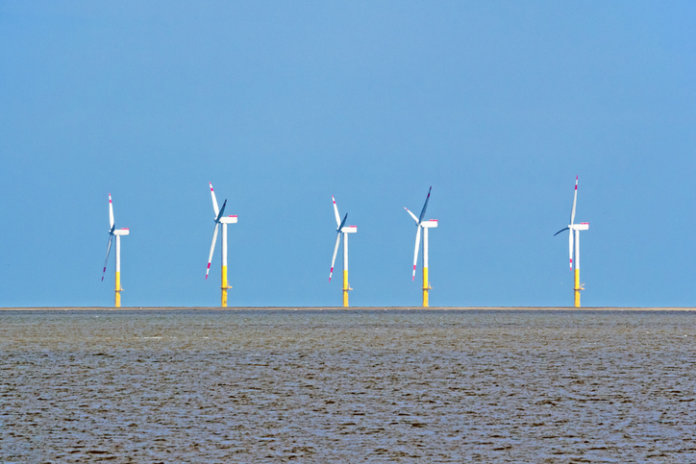A new report released by BVG Associates (BVGA) shows that Virginia’s key decision-makers can help position the commonwealth as a national leader in the growing U.S. offshore wind industry during the next decade.
The “Vision for Virginia Offshore Wind” report points to the commonwealth’s unique infrastructure and geographical advantages as keys to developing 2 GW of offshore wind – enough to power 500,000 homes – by 2028. The report comes on the heels of recent legislation setting a statewide goal of building 5 GW of renewable energy by 2028.
According to BVGA, the report presents a “realistic and immediate” opportunity for Virginia to establish itself as a hub for the entire East Coast offshore wind supply chain. By developing 2 GW of offshore wind during the next decade, Virginia can reduce its reliance on out-of-state electricity by 30%, create thousands of local jobs, and build healthier and safer communities across the state by eliminating 3 million tons of carbon pollution each year – the equivalent of removing 650,000 cars from the road, the report says.
“Virginia’s leaders have an immediate opportunity to strengthen the Virginia economy for working families and create safer, healthier communities by tapping into our vast offshore wind resource,” states Eileen Woll, director of the Virginia Sierra Club’s offshore energy program. “The ‘Vision for Virginia Offshore Wind’ report should remind every Virginia leader that investing in offshore wind will pay off for Virginia’s economy by creating well-paying jobs and lowering the cost of electricity for homeowners and businesses. We have a massive opportunity to build a clean, renewable source of domestic energy that will help to secure a better, safer future for Virginia families. The time to act is now.”
The report underscores the urgency in which Virginia’s leaders must act in order to establish Virginia as a hub for the U.S. offshore wind industry. The report recommends Virginia’s key decision-makers quickly develop a “master plan” that creates specific milestones and timelines for the Virginia offshore wind industry if the state is to achieve a goal of developing 2 GW of offshore wind by 2028.
“This report breaks new ground showing the linkage between supply chain investments onshore and project development offshore,” says George Hagerman, senior project scientist at Old Dominion University’s Center for Coastal Physical Oceanography. “Virginia can establish Hampton Roads as a production hub for supplying jacket foundations and substation platforms to the first wave of offshore wind projects farther north. As these new facilities mature and become more efficient, they pave the way for a second wave of lower-cost projects off Virginia and Kitty Hawk, adding about 4 GW of market pull to the estimated 8 GW farther north, thereby securing the financial return on early manufacturing investments in Hampton Roads.”
According to the report, many states on the Atlantic seaboard have signaled interest in developing offshore wind. However, Virginia’s skilled workforce, proximity to market, transportation resources, and coastal and grid infrastructure provide the commonwealth unique competitive advantages that few other states have, the report claims.
“The Port of Virginia is located in a geographically advantageous position to become the load center for the U.S. East Coast’s offshore wind industry,” says John F. Reinhart, CEO and executive director of the Virginia Port Authority. “The region offers several assets. The port is served by deep water with no overhead obstructions, we have two multi-use terminals that link to the world’s major ports and we are continually working to diversify our cargo mix. In addition, the region is home to an experienced ship-building and repair industry and ready workforce.”
Stephanie McClellan, director of the University of Delaware’s Special Initiative on Offshore Wind, adds, “The costs of offshore wind have come down dramatically. There’s enough wind off America’s coastlines to generate four times the amount of electricity currently generated nationwide. Regional leaders recognize that offshore wind represents a significant economic development opportunity. Compared to Massachusetts, New York, New Jersey and Rhode Island, Virginia trails other states in developing offshore wind. But it’s clear that with the right decisions and strong leadership, Virginia has the tools to quickly become a national leader in offshore wind.”
In the spring, the Virginia Department of Mines, Minerals and Energy (DMME) issued a request for proposals to find a strategic partner to help identify potential approaches to develop Virginia’s offshore wind supply chain. Recently, DMME chose BVG to assist in its pursuit of identifying ways to unlock Virginia’s offshore wind potential.
“There is significant interest in developing offshore wind in Virginia,” comments John Warren, director of DMME. “This report is an important step in recognizing the path to developing offshore wind in the commonwealth and the benefits it can unlock. This administration is committed to developing more renewable energy and sees offshore wind as important part of Virginia’s energy future.”
Gov. Ralph Northam, D-Va., will join Virginia businesses leaders, elected officials and clean energy advocates on Sept. 21 at the Virginia Offshore Wind Executive Summit.
The full BVGA report can be found here.




